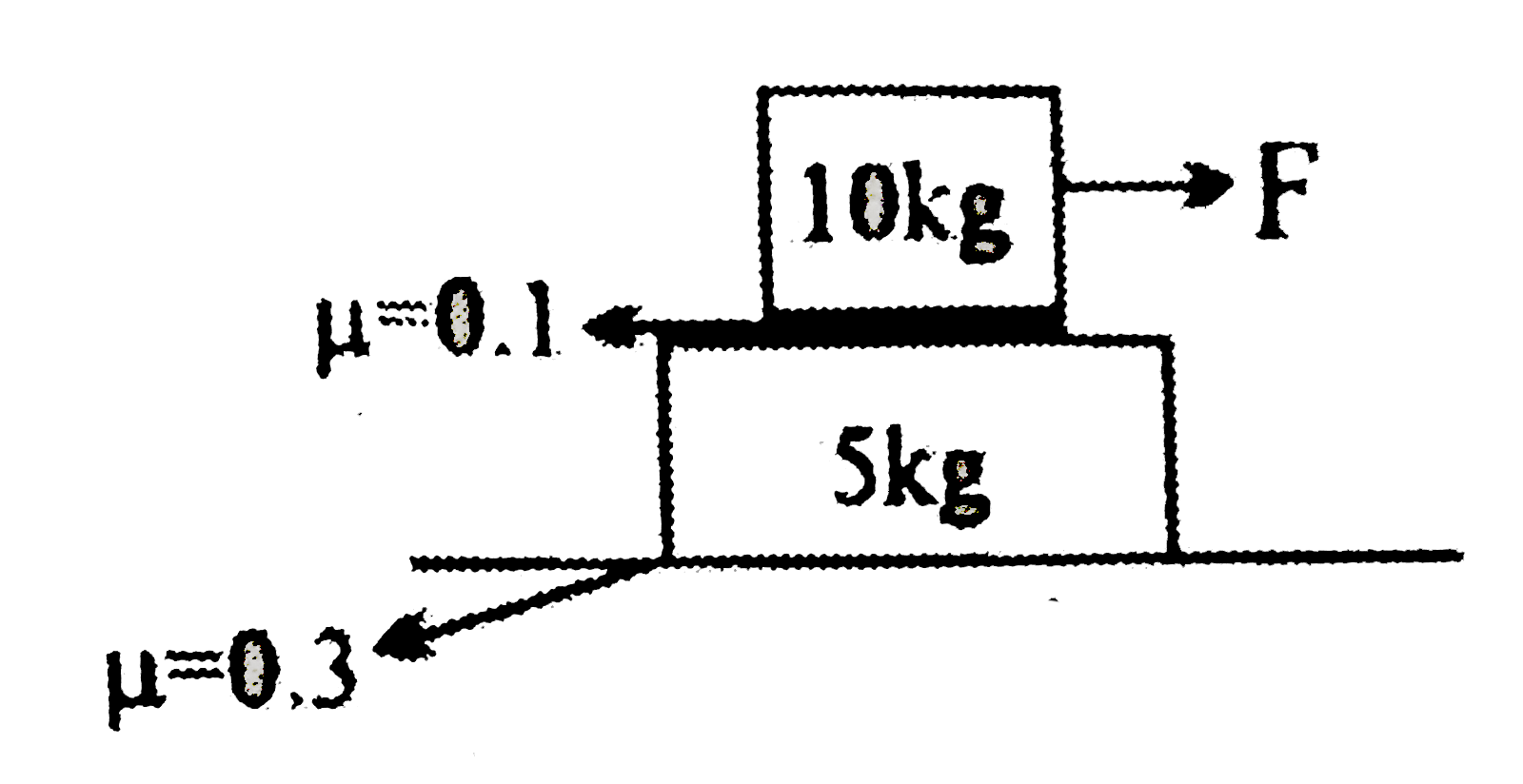The reading of a spring balance when a block is suspended from it in air is 60 N. This reading is changed to 40 N when the block is submerged in water. The relative density of the block is:
3
2
6
The correct Answer is:A
To find the relative density of the block, we can follow these steps:
Step 1: Understand the Forces Acting on the Block
When the block is suspended in air, the reading on the spring balance (T) is equal to the weight of the block (W). When the block is submerged in water, the reading changes due to the buoyant force (FB) acting on the block.
Step 2: Write the Equations
1. In air:
T=W=60N
2. In water:
T′=W−FB
where T′=40N.
Step 3: Calculate the Buoyant Force
From the second equation, we can express the buoyant force:
FB=W−T′=60N−40N=20N
Step 4: Relate Buoyant Force to Volume Displaced
The buoyant force can also be expressed as:
FB=ρfluid⋅g⋅V
where ρfluid is the density of water, g is the acceleration due to gravity, and V is the volume of the block.
Step 5: Use the Definition of Relative Density
The relative density (specific gravity) of the block is given by:
Relative Density=Density of BlockDensity of Fluid
From Archimedes’ principle, we know that:
FB=ρfluid⋅g⋅V
Since the weight of the block (W) can also be expressed as:
W=Density of Block⋅g⋅V
Step 6: Set Up the Ratio
From the equations:
FB=20N=ρfluid⋅g⋅V
W=60N=Density of Block⋅g⋅V
Dividing the weight of the block by the buoyant force gives:
WFB=60N20N=3
Step 7: Conclusion
Thus, the relative density of the block is:
Relative Density=3
Final Answer
The relative density of the block is 3.
---
When the block is suspended in air, the reading on the spring balance (T) is equal to the weight of the block (W). When the block is submerged in water, the reading changes due to the buoyant force (FB) acting on the block.
1. In air:
T=W=60N
2. In water:
T′=W−FB
where T′=40N.
From the second equation, we can express the buoyant force:
FB=W−T′=60N−40N=20N
The buoyant force can also be expressed as:
FB=ρfluid⋅g⋅V
where ρfluid is the density of water, g is the acceleration due to gravity, and V is the volume of the block.
The relative density (specific gravity) of the block is given by:
Relative Density=Density of BlockDensity of Fluid
From Archimedes’ principle, we know that:
FB=ρfluid⋅g⋅V
Since the weight of the block (W) can also be expressed as:
W=Density of Block⋅g⋅V
From the equations:
FB=20N=ρfluid⋅g⋅V
W=60N=Density of Block⋅g⋅V
WFB=60N20N=3
Thus, the relative density of the block is:
Relative Density=3
The relative density of the block is 3.
Topper's Solved these Questions
- PROPERTIES OF MATTERBOOK - DC PANDEY ENGLISHCHAPTER - PROPERTIES OF MATTEREXERCISE - JEE Advanced
57 Videos
- PROPERTIES OF MATTERBOOK - DC PANDEY ENGLISHCHAPTER - PROPERTIES OF MATTEREXERCISE - More than one option is correct
21 Videos
- PROJECTILE MOTIONBOOK - DC PANDEY ENGLISHCHAPTER - PROJECTILE MOTIONEXERCISE - Level - 2 Subjective
10 Videos
- RAY OPTICSBOOK - DC PANDEY ENGLISHCHAPTER - RAY OPTICSEXERCISE - Integer type q.
14 Videos
Similar Questions
A block hangs from a spring balance. The balance reads 40 N in air, 35 N when block is immersed in water and 25 N when block is immersed in another liquid. Find the density of block and other liquid.
View SolutionThe reading of a spring balance when a mass is weighed on it in air is 40 gm. When the mass is immersed in water, its reading is 20 gm. The specific gravity of the mass is
View Solution
The acceleration of 10 kg block when F = 30 N is
View SolutionA spring balance reads W1 when a ball is suspended from it. A weighing machine reads W2 when a tank of liquid is kept on it. When the ball is immersed in the liquid, the spring balance reads W3 and the weighing machine reads W4. Then, which of the following are not correct?
View SolutionA wooden block of volume 1000cm3 is suspended from a spring balance its weight is 12 N in air. It is suspended in water such that half of the block is below the surface of water. The reading of spring balance is
View SolutionA block suspended from a spring is released when the spring is unstretched. Then choose the correct options.

View SolutionA wire gets elongated by 4 mm when a block of mass 2 kg is suspended from it. Now, the block is immersed in water, the wire contracts by 1 mm. Find the density of block when the density of water is 1000kg/m3.
View SolutionA block of mass 4 kg and volume 5×10−4m3 is suspended by a spring balance in a lift which is accelerating. The apparent weight shown by the spring balance is 3 kg. Now the block is immersed in water in kg shown by the spring balance is
View SolutionOn the pan of a spring balance , is placed a beaker containing water . How will the reading of spring balance change if we dip our finger in this water ?
View SolutionA block of mass m suspended from a spring of spring constant k. Find the amplitude of S.H.M.
View Solution
